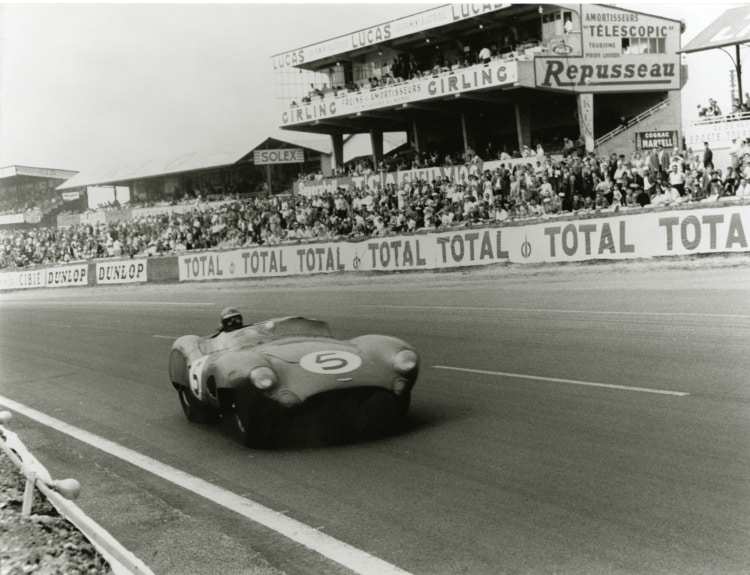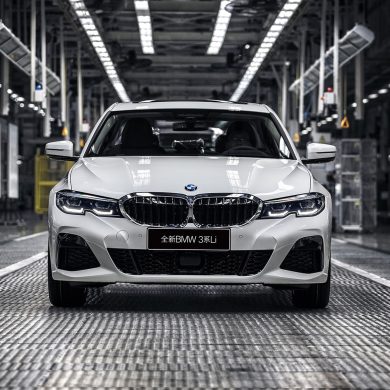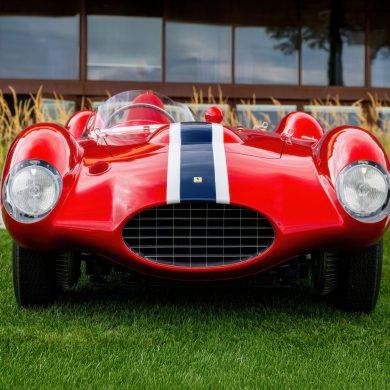Aston Martins’ racing’s successes throughout history have made it a standout company worldwide. After a third consecutive win at the Nürburgring 1,000km and an outright win at Le Mans, Aston Martin was crowned the World Sportscar Champions in 1959.
From 1931 until the present year, Aston Martin has secured multiple class wins at Le Mans, including claiming this year’s GT Manufacturers’ World Endurance Champion title. The numerous race and class victories that Aston Martin has claimed over the years has ensured their place as one of the greats in endurance racing.
Aston Martin’s endeavors in the European Grand Prix and Formula 1 are perhaps less well-known. Although they may not be as famous, they are significant to the history of Aston Martin. From the beginning, when Lionel Martin and Robert Bamford founded Aston Martin in a small London workshop in 1913, participation in well-known motorsports was an important part of the company’s character and identity.
Given that Aston Martin for the first time in more than 60 years is preparing for their return to the F1™ grid, remembering their past conquests in the most competitive and challenging motorsports class in the world is worth a revisit.
1920s Racing
Since the company’s conception, Aston Martin co-founder Lionel Martin has always dreamt for the company to be part of the glamorous world of Grand Prix racing.
Aston Martin’s reputation was made on the Hillclimb courses of Great Britain. Behind the wheel of his own car, Lionel himself had significant success, but even then, he knew that he would need to be part of the competitive Grand Prix racing around Europe for their company to be widely known in which he craved.
When the ‘Roaring 20s’ started, the vision slowly became reality when Martin met Count Louis Zborowski, a young racing driver. Zborowski was the son of a Polish Count and an American heiress, and he had a passion for speed and undeniable love for motorsport.

Having a fortune that would make him a billionaire by today’s standards, Zborowski had more than enough resources. His knowledge that Aston Martin was the name behind the earliest side-valve open-wheel racers, made him confident to comission, not just one, but two race cars from the upcoming company.
Zborowski worked closely with Lionel Martin and his team, with their goal to create two cars to use in the 1922 Isle of Man Tourist Trophy (TT) event.
Zborowski gave them £10,000, a small fortune at the time, to build the two cars and an entirely new 16-valve, twin overhead cam, four-cylinder race engine.
The first Aston Martin Grand Prix car was equipped with a 1,486cc unit and could produce 55bhp at 4,200rpm. The car weighed 750kg and was capable of speeds up to 85mph. It had two seats as per the Grand Prix regulations at the time. The other seat was for the riding mechanic, an essential member of the team as part of his job was to ensure that the fuel tank is pressurized by using a hand pump.
It is interesting to note that at the time, the car was driven by road to arrive at the race meetings it would be part of.
As was typical with Aston Martin, the engine itself had a colorful history. By 1922, 16-valve race engines have already been around for a few years. Peugeot, A.L.F.A., and Bugatti had all successfully created large capacity 16-valve units for both racing and speed record activities.
Clive Gallop was another racer who was also a close friend of Count Zborowski and acquainted with Peugeot’s engineer Marcel Gremillion. The Frenchman was a talented student of another great engine designer, Ernest Henry, who worked at Ballot.
Gremillion convinced Henry to give him the details of the 3.0-liter Ballot engine. Henry proceeded to tear his own drawings in half with which Gremillion modified to create the Bamford & Martin single cam, 16-valve, lower half in exchange for a sizeable bag filled with gold coins!
Hence the half-torn blueprint, the Henry-designed 3.0-liter was modified to become the Bamford & Martin single cam, 16-valve, 1.5.
Grand Prix Debut
Chassis TT1 and TT2 were built with the intention of racing in the Tourist Trophy event that was scheduled on June 22, 1922. Unfortunately, they could not make it in time, so they instead decided to use them at the 2.0-liter French Grand Prix at Strasbourg on July 15, marking the day that Aston Martin first appeared in a Grand Prix competition.

Zborowski was the driver of TT1, with his mechanic being Len Martin (no relation). In the TT2, Clive Gallop was the driver with his mechanic being H.J. Bentley (also no relation).

As a result of the lack of power because of the engine’s smaller capacity, which was smaller than the required capacity to race, coupled with the hurried completion and the need to carry ballast as regulated, it was not surprising that both cars were retired from the race because of engine problems. However, the experience was a thrill for the new team, giving them the drive needed to continue their Grand Prix adventure.
Over time, the TT cars, which were initially hurriedly completed, were continuously developed. In the months and years that followed, they were able to make several podium finishes, as well as a second-place finish at the 1922 Grand Prix de Penya Rhin at the Villafranca circuit. The next year, the team was able to duplicate their feat, and also in 1923, they finished third at the Grand Prix de Boulogne.

In 1924, Zborowski had an untimely demise behind the wheels of a racing car which marked the beginning of the end for Aston Martin’s first attempt to join Grand Prix racing. Except for the numerous successful privateer appearances, it would take the brand another 20 years before they made another mark in the motorsport.
1940s Racing
The 1946 Belgian Sports Car Grand Prix, although technically not a ‘top-flight’ event, is a noteworthy event in the history of Aston Martin’s racing ambitions.
Across Europe, the early post-war motorsport scene was an organic affair compared to the standards of today which focuses on leading-edge technology and relentless development. A lot of the cars that competed for honors almost immediately after WWII ended were, understandably, not completely new.
The pre-war Aston Martin ‘Speed Model’ was still very competitive so it was not a surprise to see the famous 1936 Aston Martin 2.0-liter sports car competing at the 1946 Sports Car Grand Prix Automobile de Belgique, which was held at the temporary road course next to the Bois De La Cambre, Brussels on June 16.
Driving for the event is St. John Ratcliffe Stewart Horsfall, also known as ‘Jock’, who was one of the most interesting characters to be associated with Aston Martin.
At only 24, he acquired his first Aston Martin in 1934. Horsfall was a successful stockbroker who immediately became part of the Aston Martin ‘family’, and helped tremendously in terms of development and testing.

He served with MI5 during the war and one of his duties included driving MI5 officers and agents, double agents, as well as captured enemy spies from place to place, as quickly as possible. What makes the feat even more remarkable is that Horsfall is very astigmatic and extremely short-sighted, but he did not want to wear glasses to correct his vision.
Another of his duties include testing the security of naval sites and airfields, so he had access to a lot of highly classified information. His most famous ‘secret’ activity was his role in Operation Mincemeat as a driver. Operation Mincemeat was the deception of the Axis powers’ forces, to conceal and hide the Allied invasion of Sicily in 1943.
It is also interesting to note that it is thought that the secret operation took inspiration from a 1939 note memo that had details about enemy deception tactics written by Rear Admiral John Godfrey, the Director of the Royal Navy’s Intelligence Division, and Lieutenant Commander Ian Fleming, his personal assistant.
In the post-war Sports Car Grand Prix event in Belgium, Jock, using his own vehicle, took the win beating his competitors who were driving BMW, Frazer Nash, and Alvis vehicles, making it a really remarkable win for the pre-war machine.
The race car was powered by a four-cylinder, 1,950cc overhead cam engine that could produce 125bhp, and weighed 800kg. It was designed with an ‘Ulster Style’ open body, two seats, and separate wings and reached speeds of up to 120mph.
The remarkable win in Belgium was not exactly Horsfall’s most glorious win. Three years afterward at the 1949 Spa 24-hour race as a privateer, when he took second in class, and grabbing the fourth overall, behind the wheel of the Aston Martin Speed Model. What makes the win worthy of note is that although Paul Frére was his co-driver, Horsfall decided to drive the car for the whole 24 hours single-handedly.
Unfortunately, just a little more than four weeks afterward, he was tragically killed in a racing incident at the 1949 BRDC Trophy race at Silverstone in the UK.
Today, Aston Martin Owners’ Club organizes an annual race to honor his memory, the St. John Horsfall Memorial Trophy, a true testament that shows the respect and admiration given to him by other Aston Martin owners and enthusiasts.
1950s Racing
The 1950s were an exciting time for Aston Martin. Sir David Brown obtained the business in 1947 and created the Lagonda brand later that same year.
From the onset, Sir David knew the importance of motorsport with regards to the commercial success of the brand. In 1955, he launched a steep plan to produce cars that would not only match, but beat the current giants in the World Sportscar Championship and the relatively new Formula 1 World Championship.


The Le Mans-winning DBR1 has always been the focus of history books, as well as the DB3S that came before it. It is the DP155, however, their initial venture into single seaters that provided the important learning exercise for Aston Martin and was the prototype of the later 1950s Grand Prix cars. Sir David, at the time, also started work on a new engine, as well as a new road car design which would eventually be the DB4.
The fruit of their labor was the Aston Martin DBR4. As early as 1957, it was already being tested, but it was not until 1959 that it made its competition debut at the BRDC International Trophy event, following Formula 1 rules, which was held at Silverstone in the same year.

They entered two cars into the competition and car no. 1, with Roy Salvadori, a 24 Hours of Le Mans winner, behind the wheel, came in second after Jack Brabham in a Cooper-Climax T51. The cars were powered by a 2,493cc dry sump, six-cylinder RB 250 engine. It had the same basic design as the DBR1 sports car engine, the DBR4/250 was a single seater with 256bhp, and only weight 575kg.

Although the front-engined DBR4 was driven by some of the most famous drivers of its time, including Salvadori and Carroll Shelby, it was not able to replicate the success in Formula 1, not being able to compete with the new mid-engined vehicles. They tried again with the DBR5, but after its disappointing debut, Aston Martin left the single-seater motorsport in 1960.


2010s
After taking a break for more than half a century, Aston Martin made a return to Formula 1 as they became the title sponsor as well as the technical partner of Red Bull Racing. The interesting partnership has produced the phenomenal Aston Martin Valkyrie hypercar which will be entering production in 2021.
Currently, the luxury brand is preparing for its return to the 2021 grid with the Aston Martin F1™ Team. After 60 years, we will again be seeing Aston Martin compete in a grueling F1™ race as they continue the legacy that was first started by Lionel Martin and Robert Bamford.
[Source: Aston Martin]











Very interesting article, I learnt a lot about Aston Martin’s Grand Prix history prior to the DBR4, which I saw on it’s debut. Living not far from Aston Clinton, where Lionel Martin had a degree of success, i have always felt an affinity with the marque. One of my early heroes, Graham Whitehead was a great competitor in his DB3s and DBR finishing second at Le Mans with his half brother Peter in 1959.
Thank you for such a bag full of memories,
Bob Bull.